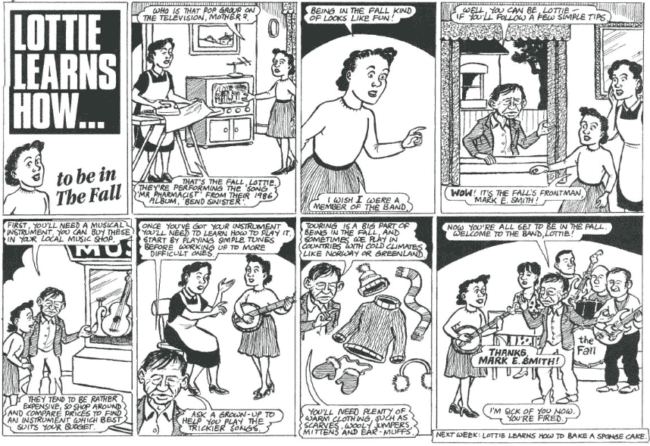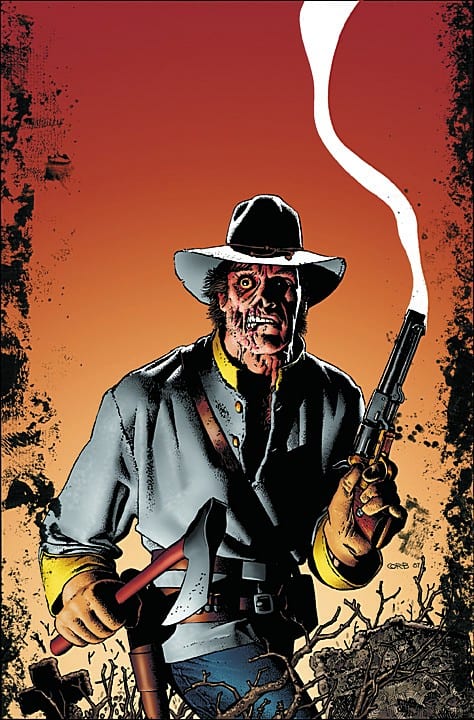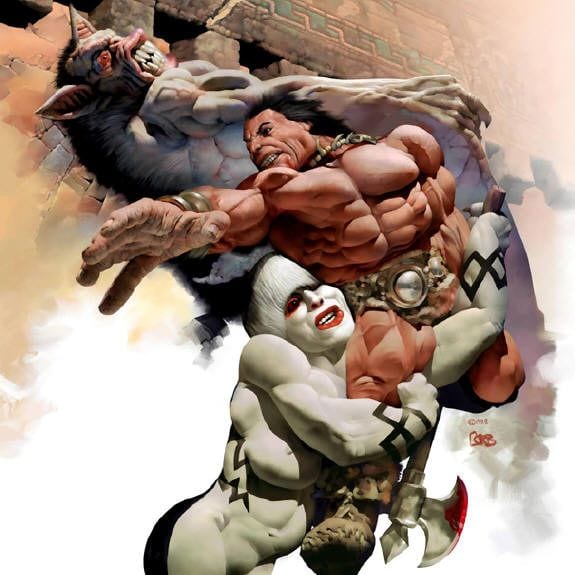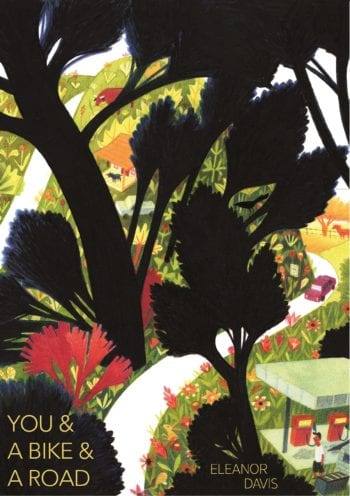Today on the site, Alex Dueben is here with an interview of John Shableski and Illya Kowalchuk, two of the organizers of the new Excellence in Graphic Literature Awards.
So where did this idea of an award start and what were those conversations like?
Illya Kowalchuk: Actually, before the first Denver Comic Con (2012) we wanted to host comic awards that were more focused on literary merit than on the individual technical aspects of comics. One of the great things about comics is that all of those different talented creators come together-the story, art, and lettering all comes together to tell one synthetic story. We didn’t see an award out there that was honoring that. Unfortunately, in 2012 we just didn’t have the bandwidth because we were all volunteers trying to put the show together-make sure the lights stayed on. Over the years, the show grew rapidly and we had to make sure that logistics and operations were successful. This past year we have been doing a lot of thinking about how we want to move forward and what other ways we can have an impact on the industry. And as fans, we want to see the content that we’ve grown up loving be honored. We felt like this was a good time for a few reasons.
There’s this synchronicity that’s happening across academia, library sciences, education, bookselling and comic creation. We’ve arrived at a tipping point where people recognize the educational value of comics and graphic novels. They’re outselling other forms of books, accepted in classrooms, and valued in libraries and corporate offices. The momentum is picking up. When Bruce [MacIntosh - Director of DCC Programming] and I met John Shableski about eighteen months ago, we all recognized that synchronicity. John crosses a lot of industries-comics, education, bookselling, and library sciences. He validated what we had been seeing on our own and we all came together and agreed: this is the time to do this.
We also have a review of Julie Maroh's Body Music, written by Jason Michelitch.
When one hears that Julie Maroh's new book is titled Body Music (Corps Sonores), it is perhaps inevitable to move from the suggestion of rhythmically moving flesh to thoughts of her debut work, the sexually frank romance-tragedy Blue is the Warmest Color (Le bleu est une coleur chaude). Specifically, one might think of the Palm D'Or-winning film adaptation of the same name*, which secured fifteen minutes of infamy for containing a long sex scene in which the lesbian lovemaking of Maroh's book is revisualized through a heavy screen of heterosexual pornographic conventions. The phrase "Body Music" would seem to promise further ventures into the sensual. After reading the book, however, the title takes on the character of a sly joke on the prurient interest that her earlier work is now inescapably saddled with. Though Maroh returns to the themes of sex, love, and LGBTQ representation, her latest work is a very different kind of book from Blue is the Warmest Color -- in some ways, it is a book that seems to be trying to be different, to break away.
Meanwhile, elsewhere:
—2dcloud. Because of various stories that have been shared and published over the past few days on social media and on comics news sites, I feel obligated to say a little bit about what happened, if only to clarify a few apparent misunderstandings.
Nearly two weeks ago, the small publisher 2dcloud announced, via Twitter, that they were cutting ties with their creative director, Blaise Larmee, due to "predatory" behavior on Larmee's part that was "inconsistent with [their] values." As I wrote then in a blog post, this was the second time in less than two months that the company had announced that they were cutting ties with an artist or associate for misconduct. In November, they revealed, again solely via Twitter, that they were canceling their plan to publish a third book by the cartoonist Andy Burkholder, who they said had been accused of sexual assault. I attempted to reach both Burkholder and 2dcloud for comment, and neither replied. After the January announcement, which also included a second tweet saying that they had destroyed all copies of one of Larmee's titles, 3 Books, I again reached out for comment, both to Larmee and to 2dcloud.
This time, around two hours after I wrote the January 4 blog post suggesting that the comics community may feel like it deserved a less opaque explanation of what was going on at the company, 2dcloud cofounder Raighne Hogan told me via email that he agreed the questions I had sent him should be addressed to some extent, and that he would get back to me soon. Here are the questions I had sent him:
1. There has been speculation that this primarily involves some of the chats Larmee included in 3 Books. If you can say, is that accurate? And is that the entirety of the problem, or are there allegations of other misbehavior?
2. When did 2dcloud learn of the allegations against Larmee?
3. Does 2dcloud have a written policy regarding sexual misconduct?
4. 2dcloud is a very small company and this has happened twice in the last two months. How did this happen? Has 2dcloud been adequately vigilant?
5. "Predatory behavior" is a very serious and also vague accusation to make -- without naming or identifying victims, isn't there a responsibility to identify behavior that others should be aware of?
6. Your twitter account indicated that you are pulping all copies of 3 Books, which seems like a very serious and unusual step to take. Why? Is there material in the book that is illegal or immoral to distribute?
7. If so, what steps did 2dcloud take to make sure the material in the book was proper to publish before contracting?
8. As a publisher that touts its ties with the community, don't you have a special responsibility to be open and transparent to that same community about what mistakes you may have made and what steps you are taking to make sure such incidents don't happen again?
I still believe those are all legitimate questions (though I would have written them more gracefully if I had known that I would later feel obligated to share them verbatim online). Depending on how Hogan/2dcloud responded, I planned to then ask more questions, if any seemed appropriate or necessary. (Note regarding question 5: I knew already that 2dcloud would probably respond that the privacy of the victims made a more explicit explanation of Larmee's actions impossible to give, but I wanted to share their reasoning on this with TCJ readers who may not have been aware of their position.) Larmee himself never wrote me back.
Nearly two weeks went by. I wanted to allow Hogan all the time he and his company needed to formulate their answers and/or a statement. I was planning to contact him sometime this weekend to see if they had made any progress, but had no intention of publishing any more on the story until they were ready. However, on Friday, the former co-editor of this site, Dan Nadel, wrote several tweets in which he forcefully criticized 2dcloud for publicly raising funds without having clearly explained what had happened with Burkholder and Larmee. I didn't see any of this until after Dan had already deleted the tweets, though they remained online for some time in the form of a screenshot of them which was shared online by someone else, and which 2dcloud and others retweeted. (That screenshot seem to have been deleted as of this morning.) Because Dan's tweets and TCJ have been linked multiple times over the weekend by various people I feel obligated to make it clear that I and TCJ had nothing to do with his tweets. Dan is no longer an editor of TCJ. I had no awareness of his tweets beforehand. Dan does not check in with me before writing on Twitter, and if he had done so in this case, I would have recommended that he not publish them.
On Sunday night, 2dcloud released a public statement, in which they announced that in a move that has apparently been in the works for some time, Raighne Hogan will be stepping down, and that Kim Jooha will be the new publisher. They also say that they will be donating 10% of the profits from Burkholder's and Larmee's books (which, except for 3 Books, are still on sale on the 2dcloud website) to RAINN. To various extents, they address many though not all of the questions I sent them in early January. I recommend reading their statement and thinking about it for yourself. In any case, it is an important first step.
I would like to end this on a positive note. I like 2dcloud. We have written about many of their books and projects on this site. Until recently, I have had nothing but pleasant interactions with Hogan, 2dcloud co-founder Maggie Umber, and Kim Jooha, who has written several times for this site and has been one of my favorite recent contributors. It is clear that the company has made some mistakes, and that those mistakes may have been fairly serious. But I attribute those errors to understandable confusion and inexperience, not anything nefarious. I believe that more openness and transparency regarding this incident will not only be good for 2dcloud, which because of its small size and funding model relies on the goodwill and trust of the comics community, but also for that community at large. I believe that an increase in transparency will lead to productive conversations, and that it may help prevent similar mistakes in the future.




















































